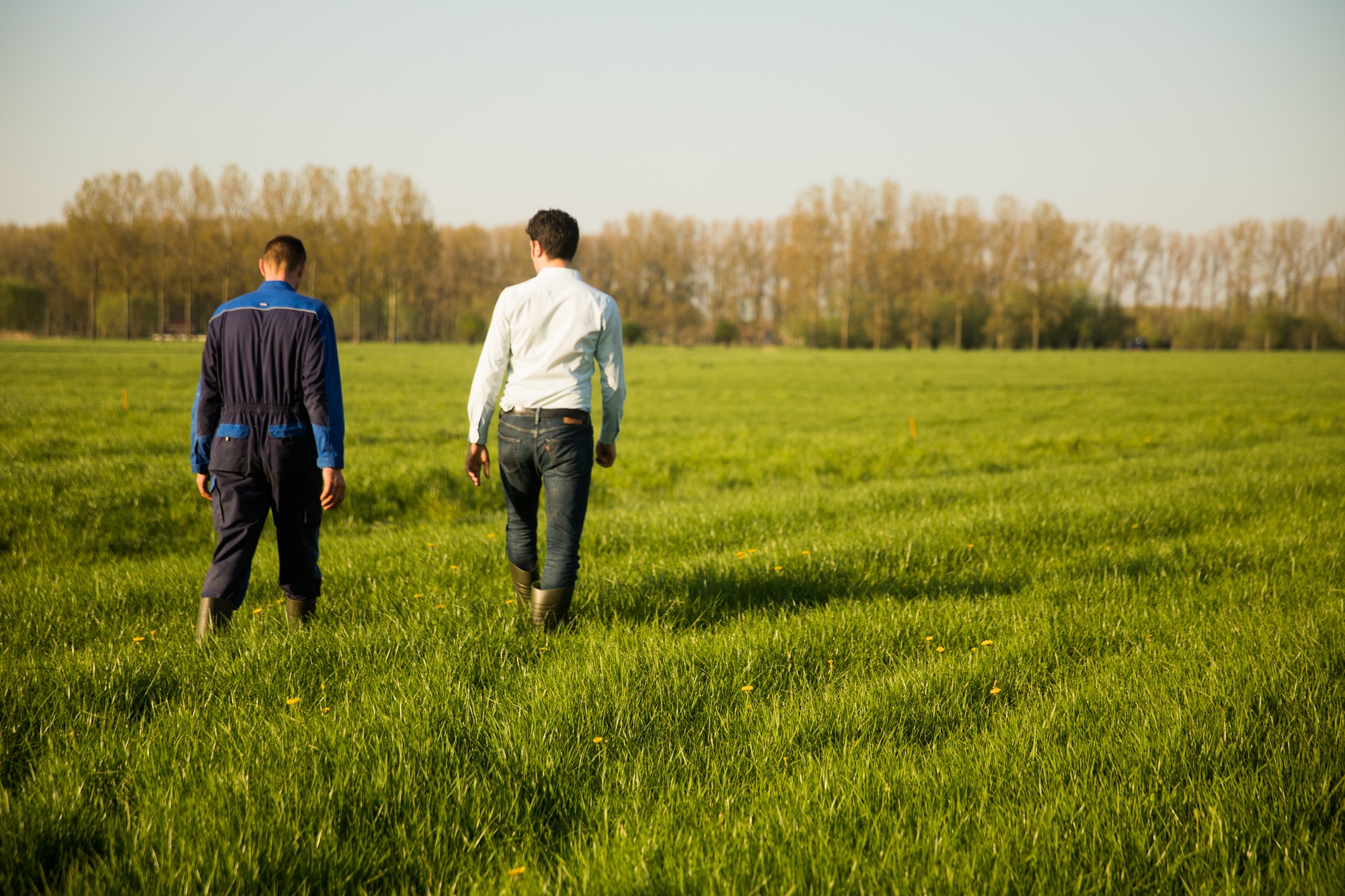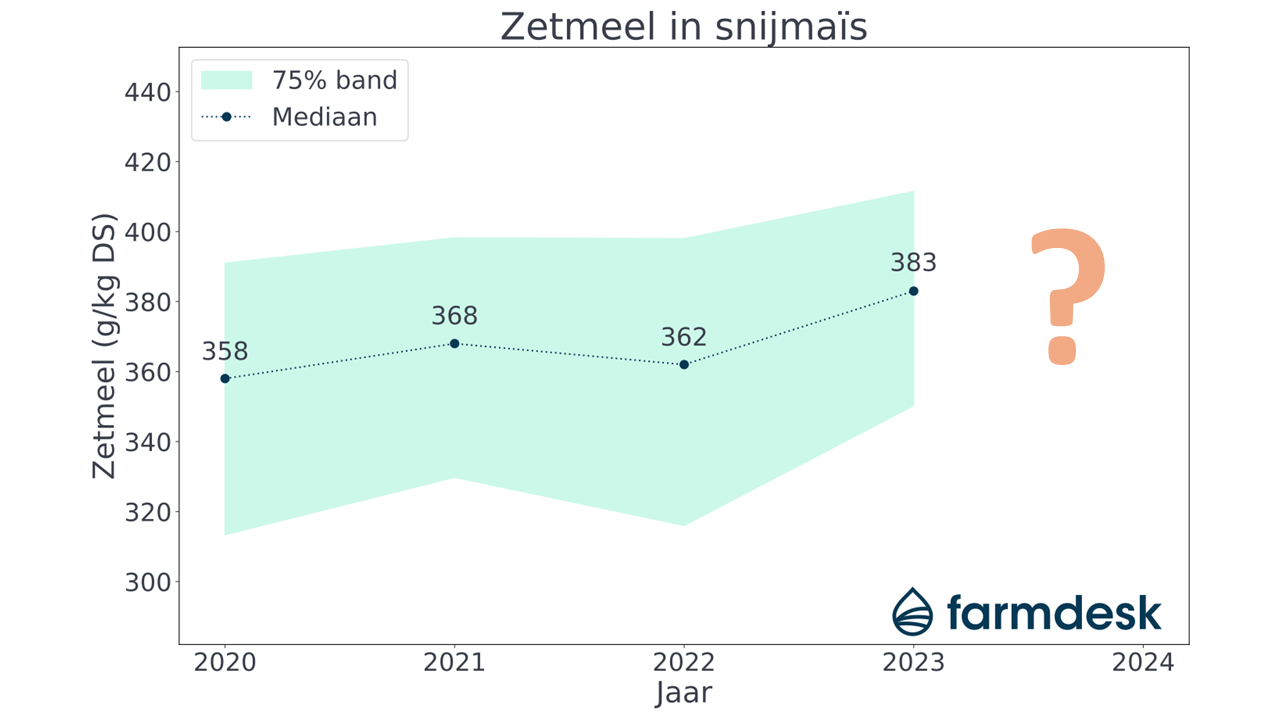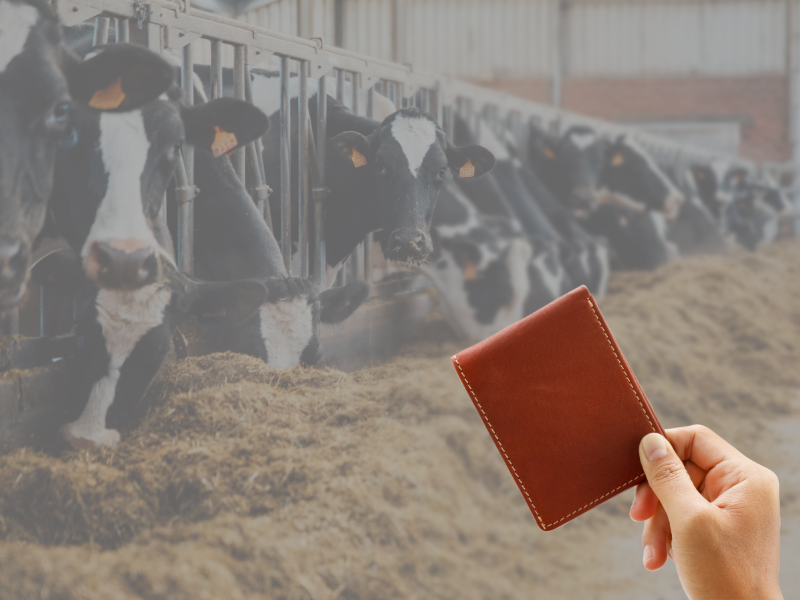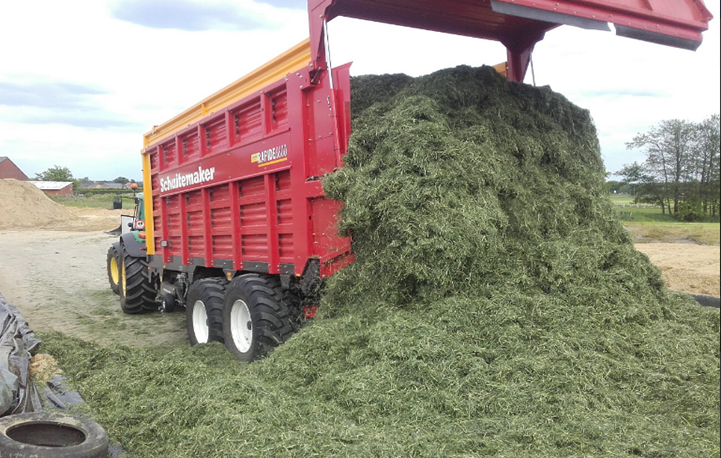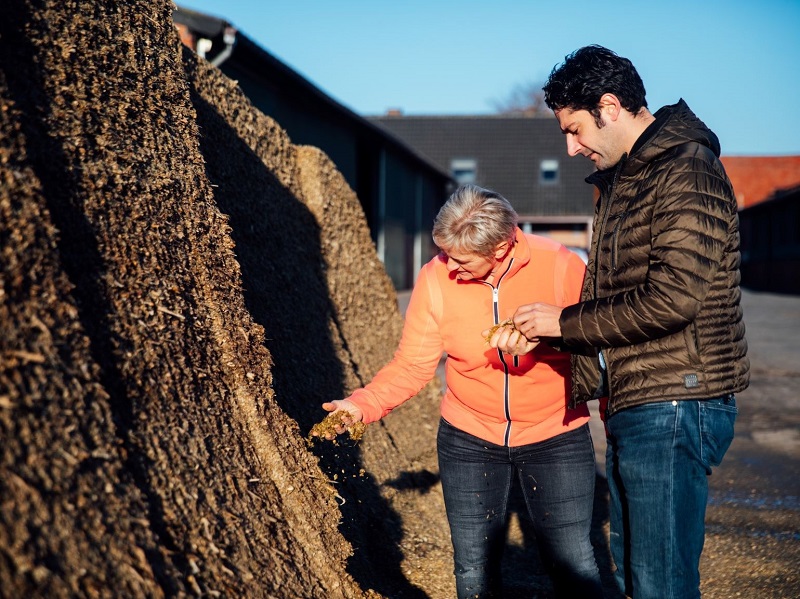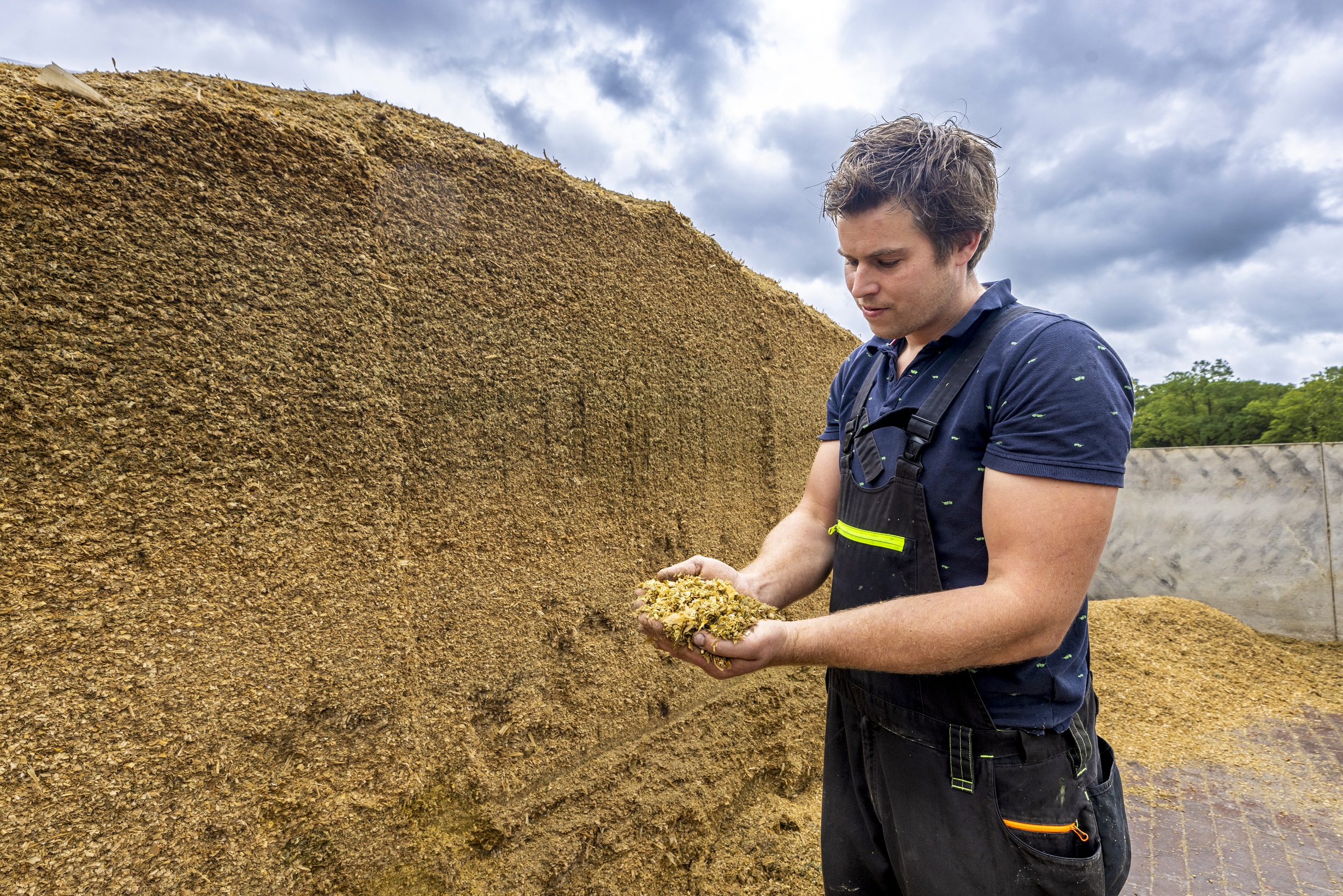Farms with many and lucky fodder beets in their cropping plan may do well to look forward to an earlier dry harvest of the cut corn. This is because the sugar from the beets already provides rapidly digestible carbohydrates in the rumen of the cattle and therefore it is best to focus more on a well-matured grain, especially if the proportion of cut corn is rather low in the ration.
From my own Farmdesk source and from initial communication from Eurofins, it appears that many farms have harvested very sugar-rich spring silage. These farms should also look forward to an earlier dry harvest of silage corn. This is because the sugar from the grass silage already provides rapidly digestible carbohydrates in the rumen of the cattle and therefore it is best to focus more on a well-matured grain, especially if the proportion of cut corn is rather low in the ration.
Farms without or with failed forage beet and with frugal sugar levels in the grass (clover) silages, in turn, would benefit from earlier early harvesting so that the starch from the cut corn is sufficiently readily digestible in the cow's rumen.
Farms with a very large grass (clover) silage stock from previous years or this crop year, have every interest in considering whether Bermuda corn (chopped under the cob), MKS or CCM is not the better harvesting method. This is because in this way we are more likely to limit the protein-poor stalks in our ration and be able to fully utilize the protein-rich stalks of grass and/or clover. MKS or CCM fit best with a previously crude fiber-rich grass silage supply. If the crude fiber content of the grass silage is rather tight, it is best to choose fairly ripe Bermuda corn to maintain sufficient rest in the ration.
2022 is a special year though!
In the field currently (mid-August 2022) there is very diverse corn: dried without cob or with badly filled cobs, desiccated with (smaller) cobs that are well filled and yet also beautiful corn that has retained its moisture or has been sprinkled.
Making the right crop choice for all tailored to the season and one's farm will be the challenge for the next few days and weeks.
Dried corn
For the excessively parched plots, it may already be best to look at a quick harvest. Dry leaves and non-vital plants will, after the rain, probably become highly fungal sensitive and thus further deteriorate in forage value. Even possibly resulting in additional mycotoxins. The first corn harvesters are already being readied to chop such corn. The yield and feed value will be disappointing andperhaps these silages will suit young cattle better than productive dairy cows. With a little luck and enough rain, there may be a post-crop harvest in these fields.
There is also early sown corn, which still had moisture at flowering, but dried out afterwards. This corn does have a reasonable cob but the plant lost its vitality. This is best shortly harvested and can serve for production animals. By harvesting it with a slightly longer stubble, you can increase its forage value. The cob will probably still be fairly quickly digestible, which fits nicely with the difficult digestibility of the plant that had a lot of stress during the extreme heat and drought.
Thus, despite the already lower yields to be expected with parched corn, it may be opportune to harvest it higher and even just just below the cob in order to get the quality of the cut corn mixture high enough. Know that the lower leaves experience drought stress first and the lower stem is harder to digest anyway. So less product with better feed value can be much more interesting especially for dairy cows than a little more product that is more difficult to digest and also already has a lower feed value.
Reasonable corn
For the corn that did manage to hold its moisture reasonably well or was sprinkled, a much faster ripening than other years may be coming. Along with a crop that has also experienced a lot of drought or heat stress anyway, this results in a fairly difficult to digest plant in the silage. Don't be surprised by waiting too long to harvest this corn. With dry plant parts and an overripe cob, winter digestion will be slow and we run the risk of a high need for rapidly digestible carbohydrates to supplement the winter ration. Many of you may recognize the situation from the 2020 harvest, where many also got surprised with too dry silage corn as a result. We often had to supplement with rapidly digestible wheat, which will probably be quite expensive now.
In addition to the sugar-rich spring grass silage, very stiff summer grass silage has also been harvested (where there was still harvestable), these, from their difficult digestibility, also benefit from corn that is harvested on time.
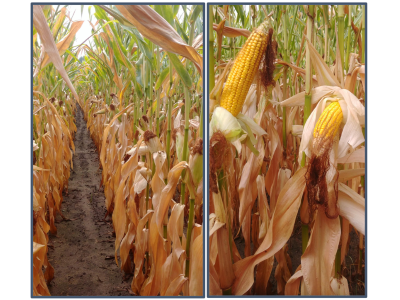
MKS/CCM
If you have sufficient forage, it is certainly worth considering harvesting a part of the corn as MKS or CCM to compensate yourself for the slower digestibility of the stressed plant. There again, focus on the maturity stage. If you fear a lot of starchy cut corn, consider harvesting your grains in time to speed up the ration. Don't be surprised on that front, the corn will mature faster than other years.
Farms that have tight forage may be forced to chop all cut corn. Do this for each individuality of corn at a different time. So the parched (without/with small cob) soon, in a separate silage. The better corn can then again in another silage, but do not be surprised by the maturity. Better a little too early than too late to get everything digested smoothly in the winter.
Nate cultivation
The corn that quickly clears the field can still be followed by a late crop. We know cut rye as a pre-crop, but it can also provide a lot of fodder for the winter as a post-crop. This one will even shoot back out after winter and could possibly yield some harvest in the spring. With a 10% Italian ryegrass supplemented, there is a bit more chance of better spring regrowth. Even though there is the question of whether we should aim for spring harvest on plots where corn dried out this year?
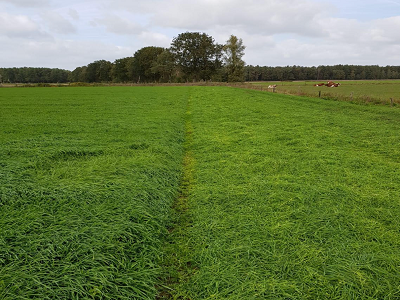
Farms that fear nitrogen scarcity on their fields with early-harvested corn might consider a mixture of rye and Alexandrian clover to still get a solid fall crop, especially if sowing could still be done in August.
"In short 2022 is a special dairy year, in which feeding cows will be a fascinating puzzle with an eye on good technical results. In addition, milk and concentrate feed are expensive now and likely to remain so this winter so it is best to try to get as much milk as possible from our own (rough) feed..."
Wim Govaerts

